All Roads Lead to Tibet
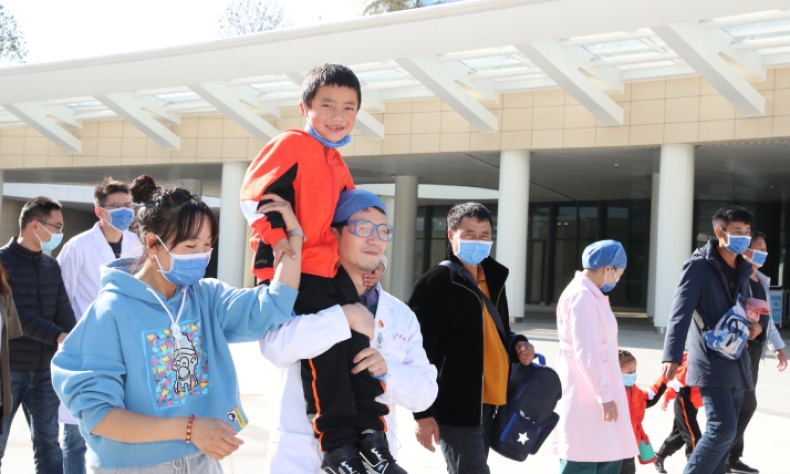
Figures from the Tibet Autonomous Regional Government show that from 2012 to 2021, the annual regional GDP increased from 71 billion yuan ($10.37 billion) to 208 billion yuan ($30.37 billion).
Moving to Tibet Autonomous Region for the long haul is quite unlike enjoying the place through pictures or traveling there as a tourist. It is not for the faint of heart. Under the glittering blue sky and fluttering prayer flags, oxygen scarcity, altitude sickness, potential sunburn and inconvenient transportation are just some factors that would deter many from making the move, or even just visiting.
Since 1994, roughly 10,000 people have left behind their families in other parts of China to work in Tibet under a national pairing-up program, supporting the overall development of the autonomous region.
Since the Third National Symposium on Work in Tibet held that year, the Chinese Government has implemented the policy of pairing-up support for Tibet, whereby central state organs, 17 provinces and municipalities directly under the Central Government, and some centrally managed state-owned enterprises have paired up with various areas of Tibet to provide assistance.
These people, mostly experienced officials, doctors, teachers and experts from various fields, work in almost every corner of Tibet—even the remotest of villages—for at least three years. They brought along their skills, technologies, ideas and anything that can spark positive change with one common goal—to make Tibet a better place.
Most of these “pioneers” have to part with family and friends and adapt to life in Tibet both physically and mentally. Some went to Tibet and returned, some stayed put and some passed away whilst working there. The policy’s implementation has generated the fastest development of Tibet in history.
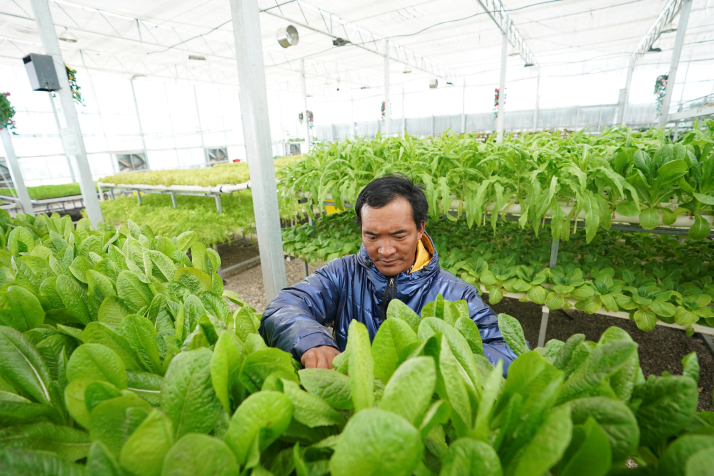
Paving the way
Foshan, a city in economically developed Guangdong Province, sent its ninth team to assist Tibet about three years ago. Last year, the team helped Medog County create its first standard football pitch. They are going to help the county set up a football training base.
On June 12, the bus carrying the team was blocked by a landslide on the way from downtown Nyingchi to Medog, a county under its jurisdiction. The bus came to a halt on a narrow road with high cliffs on one side and the roaring Yarlung Zangbo River on the other. The scene that thrilled the accompanying journalist on the bus was nothing but a common sight for team members.
Foshan has been paired with Medog since 1995. At an altitude of 1,100 meters, Medog is in a much lower location than many other places in Tibet, but its geological features made it a hard nut to crack. Earthquakes, landslides and flows of debris are common in this area, often disrupting power and water supplies. It was the last county in China to have a paved road. It took some 40 years, from 1975 to 2013, to complete the county’s first road, due to frequent natural disasters.
The team eventually turned around and headed back to Nyingchi where they spent 22 days waiting for the rocks blocking the road to be cleared.
Even though Medog locals hardly ventured out of the mountains to see the outside world before, its relatively low altitude has always made it an ideal place for playing sports in Tibet.
“All the boys in my school love football but we never got the chance to play on a real pitch,” Wangchen Norbu, a 17-year-old from a village in Medog, said. “It is hard to find a large level field in my hometown and when we did find a small space to play, we always had to be careful not to kick the ball too hard or far as it would disappear into the mountains.
“Among the 40 villages in Medog, there are 22 men’s football teams and four women’s teams that all spontaneously formed,” Xiao Zhiwei, a member of the ninth team from Foshan, said. The team contacted Evergrande Football School in Guangzhou, Guangdong Province, which is China’s largest school dedicated to nurturing young players.
“We told them how the kids in Medog love football and invited them to come and visit,” Xiao added. And so they did. In the end, several children, including Wangchen Norbu, were selected to attend the school and went to Guangzhou.

The team initiated a plan to create a standard football pitch in the county, a real luxury given the local conditions. They applied for a subsidy of more than 30 million yuan ($4.38 million), drafted an outline and worked hard to overcome all obstacles during its construction.
Finally, the pitch was completed in early 2021. The school went on to host its first game in the lead-up to Spring Festival, or Chinese New Year. Wangchen Norbu returned home for the game and was blown away. “I never expected Medog to ever have such a beautiful pitch. This is the best Spring Festival gift ever.”
Shortly after, the Evergrande Football School announced it would be establishing a training base in Medog.
Education, education, education
Education has always been of high priority in the pairing-up practice. After the road connected Medog with the outside world in 2013, the county now has its own kindergartens, primary and secondary schools and has also brought in more volunteer teachers.
Today, there are eight primary schools and one secondary school and all are paired up with quality schools in Foshan.
Apart from teaching students, teachers from Foshan have also helped train local teachers and set up online classes, enabling Medog students to attend the same classes as their Foshan peers. The number of volunteer teachers from Foshan has increased over the past three years, from fewer 10 to over 40.
“As the state plans to construct a hydroelectric station on the Yarlung Zangbo River in the coming years, over 100,000 people will move into Medog for the project,” Xiao said, adding some of the construction staff will bring their kids to Medog so they need to make sure the school’s capacity can meet demand.
The Medog-Foshan story is just one example of the successful pairing-up model. More schools have budded across Tibet over the past two decades and exchanges between teachers and students from Tibet and other Chinese areas have greatly enhanced.
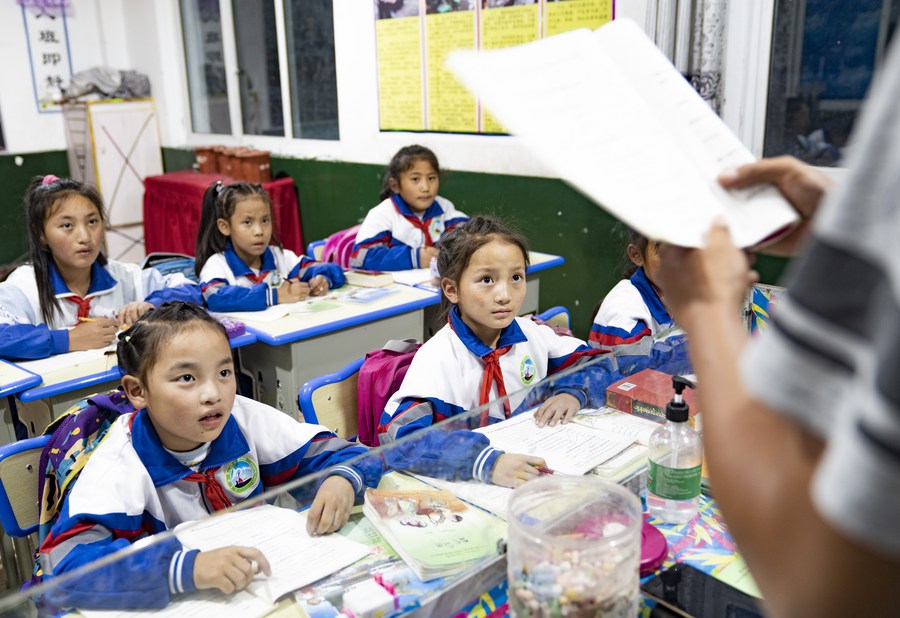
Medical services
The pairing-up model received several upgrades over recent years. In 2015, a new scheme was introduced to encourage the pairing of teachers and doctors and motivate more resources to lift the level of education and medical services in Tibet.
Wang Keming, a doctor from a leading plastic surgery hospital in Beijing, was the first plastic surgeon to go to Tibet under the pairing-up assistance policy.
Due to hypoxia caused by high altitude, dietary habits during pregnancy, and insufficient obstetric examinations, some Tibetan infants suffer congenital malformations that need to be treated with plastic surgery. Within one year, Wang performed more than 200 surgeries on patients with harelip and cleft-palate deformities.
Operations aside, Wang applied for the establishment of plastic surgery departments in Tibetan hospitals as well as trained local doctors. Today, the People’s Hospital of Tibet is capable of carrying out such plastic surgeries.
Sun Shuxue, head of Beijing’s seventh medical team to Tibet and a doctor at Beijing Friendship Hospital, has spent the past three years to bring high-quality medical resources in Beijing to Tibet, increasing the number of assisted departments in Lhasa People’s Hospital from four to nine.
Thanks to more medical personnel and resources, the hospital has been able to introduce many new physical therapies such as the correction of hip deformities in children.
A large number of local doctors, with the help of assisting experts, have carried out complex operations such as stent implantation for treating acute myocardial infarction.
Nima Tsering, a doctor in the emergency department of Purang County People’s Hospital in Ngari Prefecture, has mastered appendectomy, breast benign tumor resection, closed thoracic drainage, and other common surgical procedures by learning from doctors from Shaanxi Province.
By the end of June, seven groups of more than 1,300 medical professionals assisting Tibet had trained more than 2,400 doctors in the region. At the same time, hospitals in Tibet dispatched 1,800 local medical professionals to their paired provinces and municipalities for further studies.
By late 2021, more than 400 serious diseases could be treated without patients leaving Tibet, and more than 2,400 moderate diseases could be treated without patients having to leave their city. Moreover, average life expectancy in Tibet had risen from 68.2 years in 2015 to 72.19 years.
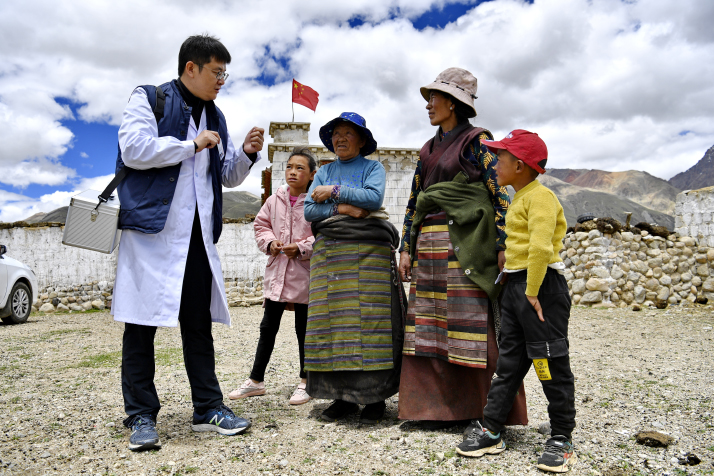
Oasis of vegetables
Along with Tibet’s medical and educational improvements, average living standards, too, have been lifted. Nowadays, it’s common to see tropical fruits and various vegetables at local supermarkets.
Zhang Jiming, a 59-year-old man from Shandong Province who has been living in Bainang County of Xigaze City for 22 years, has witnessed how Tibet has evolved from a barren land to a green haven.
Different from those who had to part with family and friends to go there, Zhang has been able to have his wife with him ever since he first came to Tibet in 2000 at the age of 37. His primary task then was to help villagers plant vegetables.
“I never thought my life would be linked with Tibet,” he said. Transportation was pretty bad in 2000. There were no trains to Tibet and the couple, traveling by bus, had to make several transfers.
“When I finally set foot in Tibet, the conditions were much worse than I had expected,” he said. “The roads leading to the village were unsurfaced. Most villagers never ate any vegetables, and had never even seen cucumbers or tomatoes.”
His greenhouse plantation project didn’t exactly get off to a good start. Locals would throw stones at him and broke down his greenhouse—as they’d only eat mutton, beef and highland grain. Any green leaves they’d get from the farm, they’d use to feed their cattle.
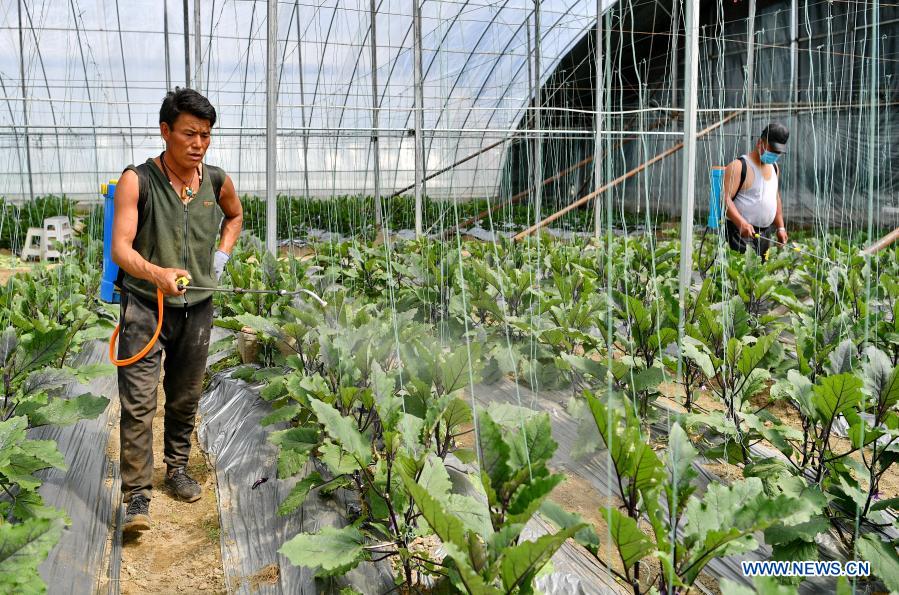
With financial aid coming in from Shandong Province, Zhang set up greenhouses for the villagers to use for free and offered free training. And his efforts paid off. Bainang has since become a major vegetable producing area in Tibet and with more roads and railways built across the region over the past decade, the county’s produce now travels far and wide.
Many other products from Tibet, including medicinal herbs, paintings and handicrafts, have all been shipped to many other areas.
At a conference about pairing-up support for Tibet on August 18 in Beijing, Wang Yang, a member of the Standing Committee of the Political Bureau of the Communist Party of China (CPC) Central Committee, who heads a central coordinating group for Tibet work, used the word “unprecedented” to describe the efforts and achievements that the pairing-up support work has exerted and made since the 18th CPC National Congress in 2012.
Figures from the Tibet Autonomous Regional Government show that from 2012 to 2021, the annual regional GDP increased from 71 billion yuan ($10.37 billion) to 208 billion yuan ($30.37 billion), per-capita disposable income of farmers and herders increased from 5,698 yuan ($832) to 16,935 yuan ($2,472) and the roads stretched from 65,200 km to 120,700 km.
Xiao has returned to Foshan and passed the baton to the next team. Wang Keming travels to Ngari Prefecture, the highest prefecture in Tibet, from time to time to offer locals free medical treatment including surgery. Zhang still runs his greenhouses. “I’ll stay in Tibet till I’m too old to work,” he said.
As the old Tibetan wisdom goes, “When he took time to help the man up the mountain, lo, he had scaled it himself.”
 Facebook
Facebook
 Twitter
Twitter
 Linkedin
Linkedin
 Google +
Google +










